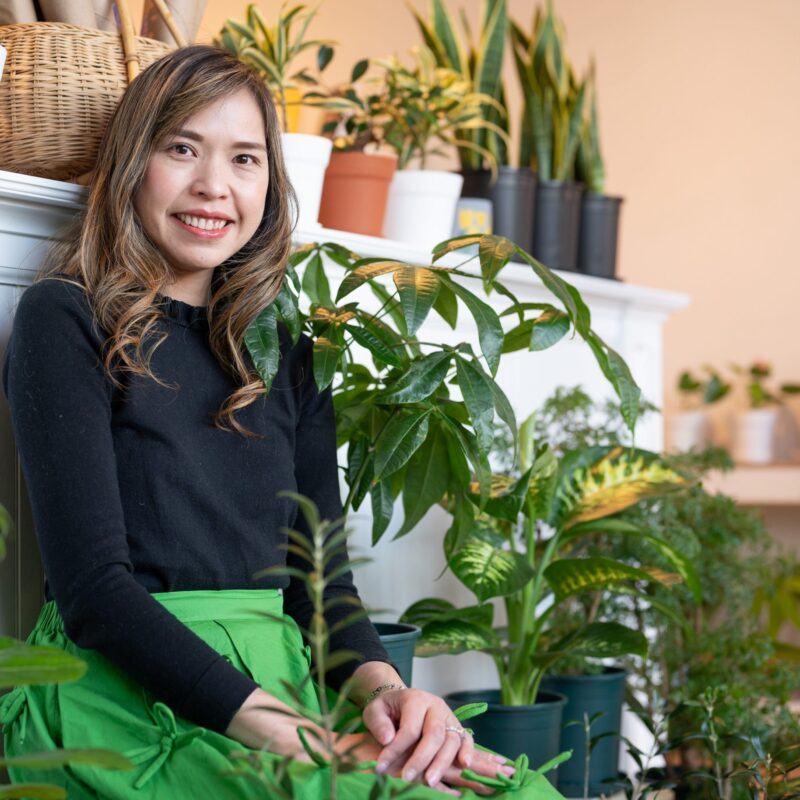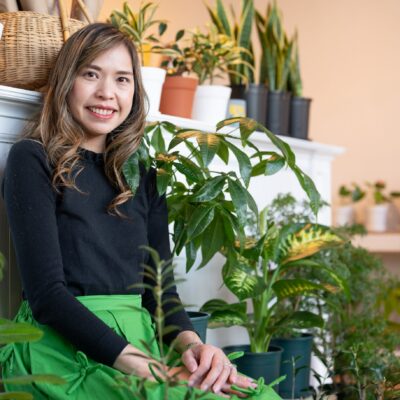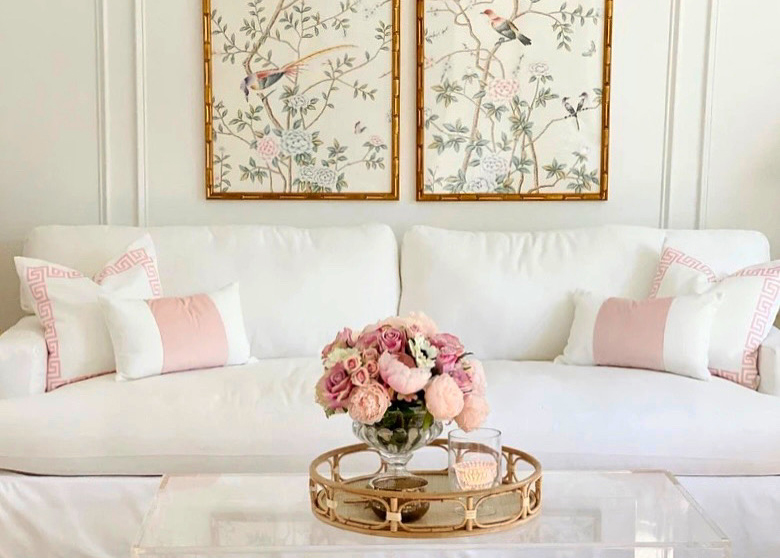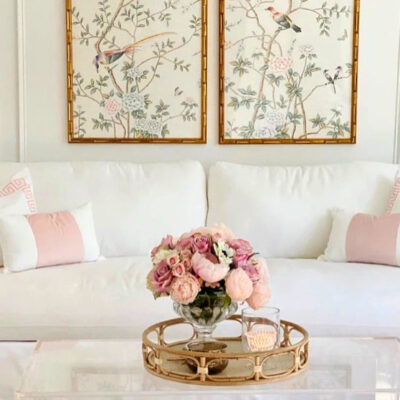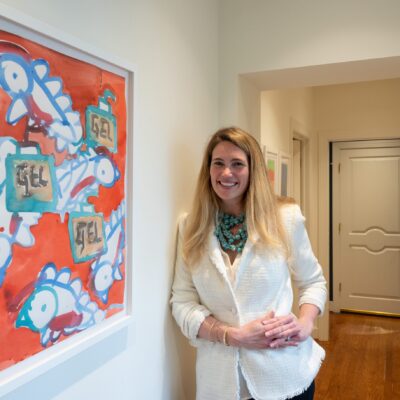This place looks nothing like a hay barn.
Yet there was a time, at some point in the early 20th century, when the Somerset farmhouse now belonging to David and Sissy Perdue was in fact used to store hay. Built in the 1880s as a two-over-two home for a family of chicken farmers, the house has passed through multiple phases, including additions and renovations by various owners.
“There was a big renovation in the early ’80s,” says David. When he, Sissy and their three children moved here from Atlanta in 2003, that 20-year-old renovation was still in place. “There were a lot of things that bothered us,” he says. The kitchen was clearly outdated, and the room next to it was lined with unattractive casement windows.
There were more imperfections, but the full scope of the changes the Perdues wanted to make didn’t become clear for a while. In the meantime, they enjoyed the fantastic Blue Ridge views from their gently elevated site, along with the features that had attracted them to the property: the pool, the pond and river frontage on the Rapidan. David says they knew they loved it the minute they first pulled up the driveway: “We said, ‘I guess we need to look at it, but we know we’re buying it.’”
A similar stroke of intuition seems to have connected them with residential designer Peter LaBau several years later. LaBau, who specializes in historic structures, showed up on a whim one day along with a mutual friend. “I was just a passenger in the car,” he remembers. “Before we knew it, we were talking about the house.”
Once they became official clients and began laying out the program for the renovation, more and more goals joined the list. “The scope got bigger,” says Sissy. With three growing children and several dogs, there was a clear need for practical flow and adequate space.
Windows and doors
Something less obvious needed to happen, too. At the time when the house was built, says LaBau, “People used the yard a lot, for cutting gardens, doing laundry, keeping livestock. Your connection to the outdoors was different.” Additions over the decades had cut the house off from its immediate outdoor surroundings, and LaBau wanted to restore those ties.
That would require comprehensive thinking about inside and out. LaBau took as a starting point those unloved casement windows. These filled the walls of a room that flowed from the kitchen and served as combination casual dining space/living room.
While the west-facing room had great Blue Ridge views, the windows didn’t fit the house, which elsewhere retained original (and impressively sized) double-hungs. Even more importantly, the room opened onto a porch that, LaBau thought, could work much harder to draw people outside and, ultimately, into the yard.
He designed a wraparound porch on both the western and northern sides of the house, making lots more room for the Perdues to use the porch for different purposes, and connected to the interior through no fewer than five different doorways. “To have that flat yard as part of the house changes everything,” says David.
Judicious additions
Other changes to the interior layout made for better flow and more opportunities to enjoy privacy—for example, pocket doors between two living spaces allow the younger Perdues to watch TV without the noise bothering their parents, when they are next door enjoying the fireplace.
David remembers one bothersome detail in particular: Anyone entering the house’s front door used to have an uninterrupted view of a powder room toilet at the end of the center hall. Simply moving the door of that powder room around the corner solved the problem.
Another puzzle was a bit more complicated: how to fit laundry and a mudroom into the existing layout. Ultimately, LaBau proposed a new addition that would carry those functions on the first floor, plus a kids’ playroom on the second, accessed by a back stair that would keep the noise of running feet out of the rest of the house. “We infilled that corner of the house,” he explains. David says that the addition adds huge practical value for his children in particular: “Peter was intuitive about the way they live.”
One of LaBau’s goals was to retain and enhance the original architectural details that he believes made the house special, if not as grand as some of its neighbors. “It’s an Italianate—pretty inspired,” he says. “The idea was to make it feel like a whole organism so the design elements flow from room to room.”
Using original windows wherever possible—often moving them from one spot to another—contributed to that effect, and so did the replication of original molding and trim pieces. All the authenticity provides a foil to Sissy’s eclectic interior design, which mixes antique furniture, flea-market finds, contemporary art and photography and taxidermy.
Details also serve to make the kitchen more congruent with the rest of the house. “The trick was to work with the profiles and shapes elsewhere in the house,” says LaBau. Honed granite countertops, painted cabinets and a custom painted pattern on the original wooden floor add up to a highly functional but aesthetically serene kitchen.
From the kitchen sink, one has a pleasing view of landscaping surrounding the pool, and a lawn shaded by old silver maples.
“The house has reconnected itself to the landscape,” says LaBau—and this time, not by storing hay.
Outdoor moves
Cars and driveways seemed to surround the house when the Perdues bought it, and vehicles were often parked just a step or two from the home. One of their major goals, then, was to push vehicular activity further away, protecting their views and quietude. Fortunately, the property also came with a number of mature boxwoods that were able to be dug up and relocated, forming visual screens to hide the cars.
Once the cars were out of the way, outdoor living space became a lot more human-friendly. Landscape designer Schatzi McLean dreamed up an outdoor room next to the existing pool, providing needed shade. A large trellis supports a leafy “roof” of akebia quinata vine.
McLean also created a stone terrace and fire pit in a spot where the Perdues had gotten accustomed to making campfires. With flagstone and mature plantings, it looks quite intentional—a far cry from the spot where, as David remembers, “we used to put lawn chairs in the driveway.”—E.H.
